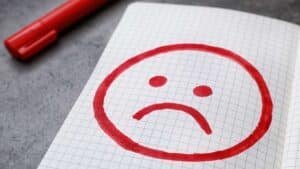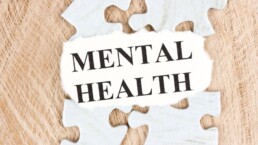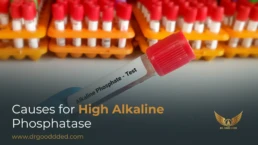Understanding the Physical Signs of Depression and Anxiety
Depression and anxiety are two of the most widespread mental health issues impacting millions worldwide. While they are rooted in psychological experiences, it’s essential to recognize that they often manifest physically, influencing various aspects of an individual’s well-being. In this in-depth exploration, we will not only delve into the definitions of depression and anxiety but also unveil the physical symptoms associated with these conditions. Understanding this intersection of mental and physical health is vital for improved awareness and support.
Table of Contents
ToggleDefining Depression and Anxiety
Anxiety: In ancient times, our ancestors roamed the grasslands of Africa, and their anxiety often revolved around real threats like predators, weather conditions, and food availability. Back then, anxiety served as a valid survival response. However, in the modern world, our fears predominantly reside in our minds, and we suffer from anxiety that used to be somewhat protective in ancient times. When this feeling becomes persistent and unrelenting, and we can’t let go of it, we call it “worrying.” This chronic worrying leads to a never-ending cycle of thoughts about all possible negative outcomes, resulting in an uncomfortable, loss of control-like feeling called anxiety. People with anxiety often exhibit behaviors reminiscent of our ancestors in the forests: always alert, always on the lookout for danger, always focused on survival. However, unlike our ancestors, who could rest once they were safe and had food, we struggled to find that respite. This perpetual thought cycle can drive us to the brink, making concentrating, sitting still, or sleeping challenging. We become edgy, irritable, sweaty, and angry. Over time, we lose our grip on life, and our work, relationships, and even our addictions start spiraling out of control, exacerbating the feeling of losing control.
Depression: Depression is characterized by a persistent state of feeling low and demotivated. It typically begins with a lack of interest and motivation. Then, it progresses to lethargy, accompanied by a sense of joylessness and passionlessness. Individuals with depression often experience worse symptoms in the morning, gradually improving as the day progresses. Suppose sadness, emptiness, or a lack of interest persists for over two weeks, failing to improve even in happier circumstances. In that case, it’s indicative of a depressive disorder.
Both depression and anxiety can coexist and often share some common physical symptoms.
Here are some of Physical Signs of Depression and Anxiety
Physical Signs of Depression
Fatigue
One of the hallmark physical manifestations of depression is an overwhelming sense of fatigue and an acute lack of energy. This pervasive fatigue can make even the simplest tasks feel like monumental efforts. For those grappling with depression, getting out of bed in the morning can seem impossible. This profound exhaustion can severely impact an individual’s day-to-day life, hindering their ability to function optimally.
Disturbed Sleep
Depression frequently disrupts an individual’s sleep patterns. This disturbance can manifest in different ways. Some individuals with depression may grapple with insomnia, struggling to fall asleep or experiencing frequent awakenings throughout the night. Conversely, others may find themselves sleeping excessively, often as a coping mechanism to escape emotional pain or as a manifestation of the pervasive exhaustion they experience.
Food Habits
Depression profoundly influences an individual’s eating habits, often resulting in significant weight changes. The impact varies from person to person. Some individuals with depression may experience a loss of appetite, which leads to weight loss due to inadequate food intake. On the contrary, others might turn to food as a source of comfort, leading to overeating and subsequent weight gain. These fluctuations in eating habits are physical expressions of the emotional turmoil that individuals with depression are going through.
Pain Everywhere and Anywhere
A distressing aspect of depression is the emergence of unexplained physical symptoms. Individuals suffering from depression often complain of aches and pains, including frequent headaches, backaches, and stomachaches. What sets these physical complaints apart is that they typically lack a clear medical cause. These unexplained physical sensations can further exacerbate an individual’s distress and confusion as they grapple with these additional challenges on top of the emotional burden of depression.
Inability to Fight Common Infections
The consequences of depression extend beyond emotional and physical pain. This condition can compromise the immune system, rendering individuals more susceptible to common illnesses. A weakened immune system not only prolongs the physical suffering of depressed individuals but also contributes to the cycle of fatigue and vulnerability.
Slowed Movements
One observable physical manifestation of depression is slowed movements and speech. Depressed individuals may appear lethargic, unresponsive, or disconnected from the world around them. These slowed physical responses reflect their emotional burden, making even the most straightforward physical actions seem laborious. Depression permeates the mind, emotions and physicality of those affected.
Physical Signs of Anxiety
Aching Muscles
Anxiety often gives rise to muscle tension, and as a consequence, individuals may frequently experience aching muscles. This muscular discomfort can manifest as soreness, stiffness, or muscle spasms. The stress and tension associated
Anxiety can lead to sustained muscle contractions, particularly in the neck, shoulders, and back areas. The persistent strain on these muscles can result in discomfort, further adding to the overall burden of anxiety.
Gastrointestinal Distress
Anxiety can significantly impact the gastrointestinal system, leading to a spectrum of digestive problems. Many individuals with anxiety report experiencing stomachaches, bloating, diarrhea, or irritable bowel syndrome (IBS). The gut-brain connection plays a pivotal role in these symptoms, where heightened anxiety levels can trigger stress responses within the gastrointestinal system, exacerbating physical discomfort. This cycle of anxiety and digestive distress can lead to continuous physical unease.
Rapid Heartbeat
When anxiety takes hold, a rapid heartbeat is one of the most palpable physical manifestations. The surge in anxiety levels can stimulate the body’s stress response, causing the heart rate to increase. This heart rate acceleration can result in vibrations, often described as rapid, strong, or irregular heartbeats. The physical sensation of a racing heart can intensify an individual’s sense of unease and serve as a constant reminder of their anxiety.
Shallow Breathing/Difficulty Breathing
Anxiety frequently disrupts an individual’s breathing patterns, leading to shallow or rapid breathing sensations. It is often described as “breathlessness” or hyperventilation. Such changes in breathing can create an uncomfortable feeling of breathlessness, and some may even experience a sense of suffocation. These altered breathing patterns’ physical manifestation is a clear indicator of heightened anxiety.
Sweating
Excessive sweating, irrespective of external factors such as temperature or physical exertion, can indicate anxiety. When anxiety levels spike, the body may respond with profuse sweating as part of the fight-or-flight response. This excessive perspiration can be particularly distressing for individuals experiencing anxiety in social situations, as it may be visible to others, adding to their unease.
Dizziness
Dizziness is a common physical symptom experienced by individuals with anxiety. Anxiety-induced dizziness can manifest as feelings of lightheadedness or a sense of instability. This physical sensation may contribute to physical instability and discomfort, further intensifying the impact of anxiety on an individual’s overall well-being.
Tremors
Anxiety can lead to trembling or shivering, most notably in the hands. These tremors are physical manifestations of the heightened physiological responses during anxious episodes. Such physical symptoms can be both unsettling and distressing, adding to the overall burden of anxiety.
Why Do These Physical Signs of Depression and Anxiety Occur?
The physical signs of depression and anxiety are closely linked to the body’s stress response. When stressed or anxious, your body releases stress hormones like cortisol and adrenaline. These hormones can impact various systems in your body, leading to physical symptoms. Physical symptoms are often a result of the body’s overall lack of energy and motivation. People with depression may neglect their physical health, leading to fatigue, changes in appetite, and weakened immunity.
Managing Physical Signs of Depression and Anxiety
If you or someone you know is experiencing physical signs of depression and anxiety, seeking help is essential. These conditions are treatable, and professional assistance can make a significant difference. Therapy, medication, and support groups all have a role to play in the healing process. However, the first step is to recognize that you have a problem. Treatment is only possible with acceptance.
Conclusion
Mental illnesses are not limited to the brain and the mind; they also exhibit physical signs of depression and anxiety. These conditions can slowly erode the body’s immunity and are linked to cancer, dementia, and heart problems. Timely diagnosis and treatment are extremely important in dealing with such diseases. They will go a long way in decreasing the disease’s physical, mental, and financial burden.

This article is medically reviewed by Dr. Chandril Chugh, Board-Certified Neurologist, providing expert insights and reliable health information.
Dr. Chandril Chugh is a U.S.-trained neurologist with over a decade of experience. Known for his compassionate care, he specializes in treating neurological conditions such as migraines, epilepsy, and Parkinson’s disease. Dr. Chugh is highly regarded for his patient-centered approach and dedication to providing personalized care.










